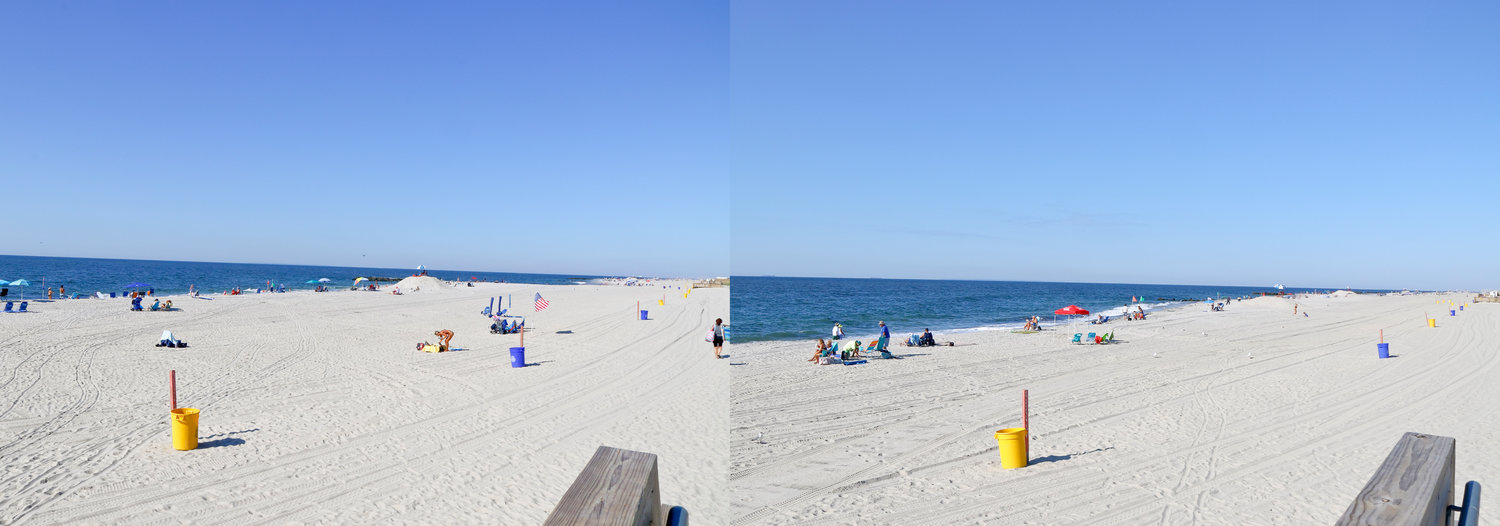L.B. again asks U.S for help with groins
The City of Long Beach is again waging a battle against nature, once more asking the U.S. Army Corps of Engineers for help securing some of the groins on the beach it says are creating “serious safety issues” that “put the pubic at risk.
In a letter earlier this month to Col. Thomas Asbery, commander and district engineer of the New York District U.S. Army Corps of Engineers, Joseph Febrizio, Long Beach’s public works commissioner, said, “The City also remains concerned about the ongoing structural stability of the groins.”
In 2018, the Corps completed work on replenishing sand on the beach and rehabilitating 18 jetties, or groins, from Point Lookout to the City’s West End.
The Corps had said previously that it has “conducted site visits and surveys of the groins in Long Beach. They are functioning successfully to hold the sand as designed. The appearance of the groins may shift over time, which is expected.”
The agency said also at the time that it did not plan to repair the groins. “The re-nourishment cycle for sand is estimated to be every 4-5 years in partnership with local and state partners.” The corps said it planned to continue to monitor the situation.
The Corps said much the same in an email Monday: “The rehabilitate groins at Long Beach are functioning as designed and have been turned over to the New York Department of Environmental Conservation and City of Long Beach. We will continue to work with our partners as required.”
Febrizio said in his letter, however, that while beach erosion has been “significantly reduced” for 60 percent of the beach, the other 40 percent, where eight groins were not reconstructed have shown significant beach erosion.
He said the eight non-rehabilitated groins “have created a serious safety issue and public hazard resulting from sand placement over portions of the existing structures.” The landward end of these groins, the letter said, “were covered at the end of the” Crop’s project “but are now starting to break through as the beach in these areas erodes.”
Febrizio wrote that while beach goers now have some indication where the groins are when high tide arrives, the groins are not see on either land or in the ocean.
“The general public is still at risk…by unknowingly coming into contact with the boulders while swimming, wading, surfing, etc.,” Febrizio wrote.
He wrote that the city understood that over $240 million had been allocated for the Corp’s beach project and that the total cost when completed was less than $170 million.
Febrizio said Long Beach is asking the Corp’s help in securing the funds not spent to reconstruct the eight groins “thereby preventing further beach erosion by reducing those areas of beach where there is greater distance between completed groins.”
The public works commissioner had been joined in asking for the Corp’s help by Paul Gillespie, Long Beach’s Chief of Lifeguards,. “We are losing beaches,” Gillespie had told the City Council.
Over the course if several years, the Corps built four new jetties in addition to rehabilitating others, after nearly 300,000 cubic yards of sand were lost to Superstorm Sandy in 2012.

 39.0°,
Fair
39.0°,
Fair 




